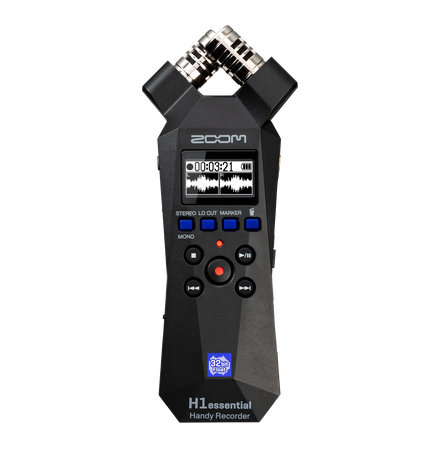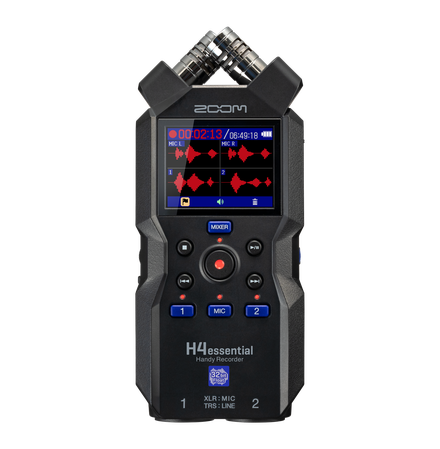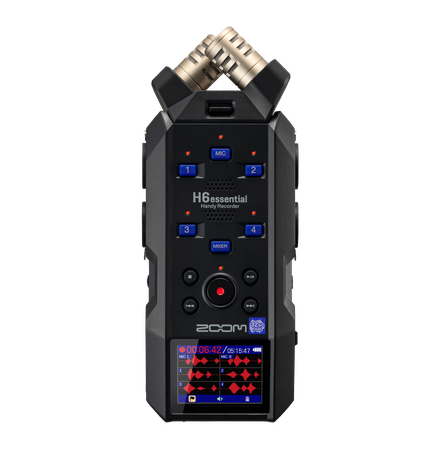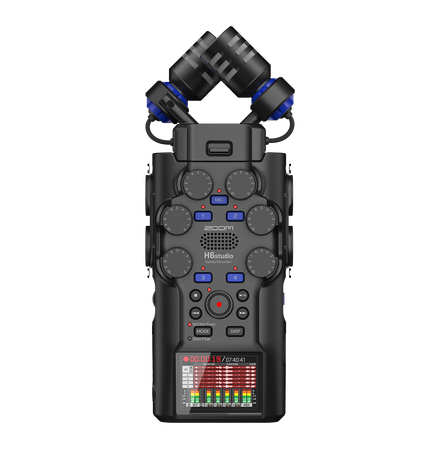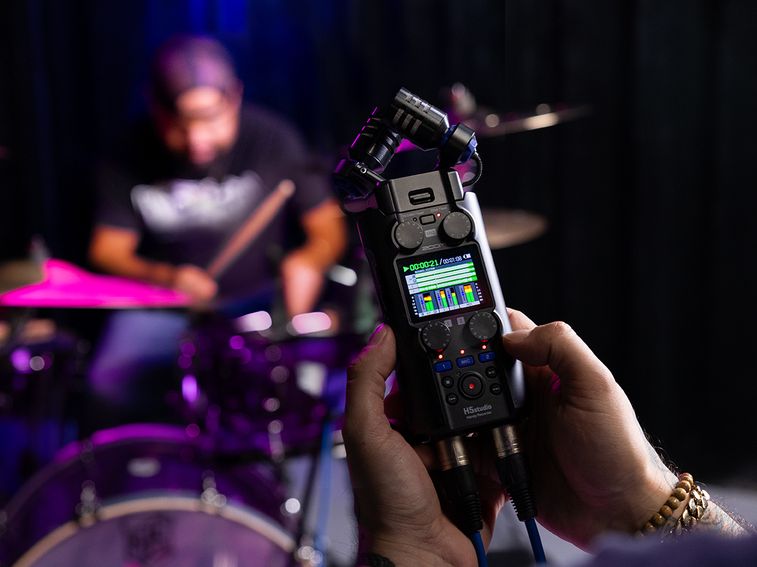
Why XY Stereo Recording?
Recording with true XY stereo microphones has several advantages including:
- Natural sounding stereo image
- Accurate re-production of L/R width and depth
- Ability to capture sound from the front clearly
- Easy to convert to mono for broadcasting purpose
The key factor is that there is NO phase difference between sound captured by the left and right microphones. This article explores how this phase difference affects sound quality by comparing True XY Stereo recording versus conventional AB Stereo method.


XY Stereo Technique
This photo demonstrates an XY stereo setup featuring two matched microphones. Their diaphragms are aligned on the same axis and angled 90° toward the sound source. By positioning both microphones equidistantly, sound waves reach them simultaneously, preventing signal delay and eliminating phase differences.
But what exactly is the relationship between signal delay and phase difference?
To explore this, let's compare XY stereo recording with AB stereo recording.

XY Stereo vs AB Stereo
Sound waves originating from a central source (brown guitar) reach both the left and right microphones simultaneously, regardless of the stereo recording technique used.
In contrast, sound waves from an off-center source (green guitar) arrive at the left and right microphones with a slight time delay when using the AB microphone configuration. In the diagram above, this delay is represented by the green arrow, indicating that the sound takes a slightly longer path to reach the left microphone.
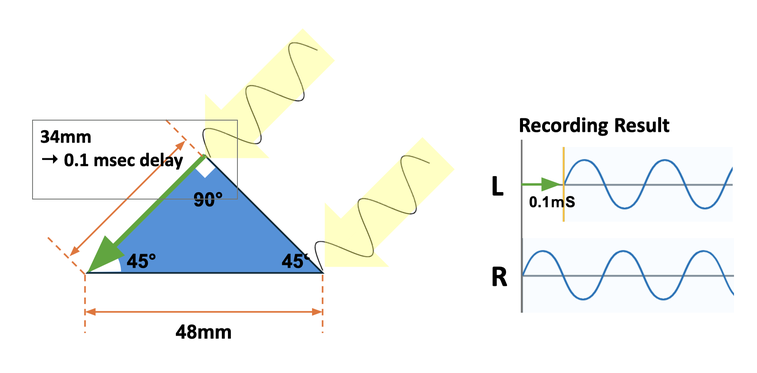
What is the specific delay time of the off-center signal shown by the green arrow?
Assume the microphones in the AB configuration are spaced 48 mm apart. When recording a sound source positioned at a 45° angle to the right, the left microphone is about 34 mm farther from the source than the right microphone. Since sound travels at 340 m per second, the soundwave reaches the left microphone about 0.1 milliseconds later than the right.
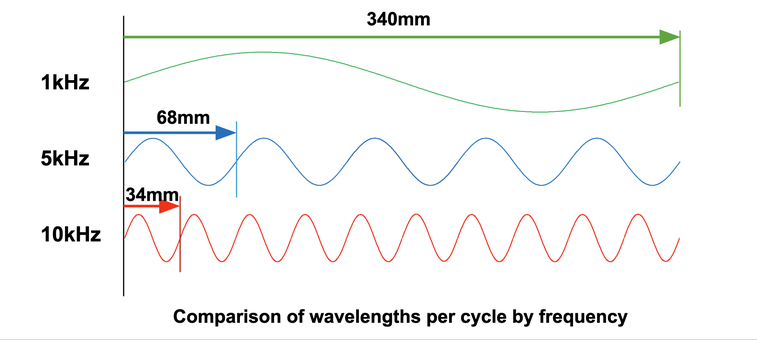
How does this 0.1millisecond delay affect audio characteristics?
The delay caused by distance is constant, but its effect varies with frequency, this is known as phase difference. Each frequency corresponds to a specific wavelength; for example, a 1 kHz tone has a wavelength of 340 mm. Higher frequencies have shorter wavelengths: 5 kHz equals 68 mm, and 10 kHz just 34 mm.
When a delayed left mic signal combines with an undelayed right mic signal during playback, the interaction affects sound perception. For instance, a 1 kHz tone may be slightly amplified by a ~40° phase shift, while at 5 kHz a 180° shift causes cancellation. At 10 kHz, a 360° shift can double the sound. This illustrates how mic placement and phase shifts greatly influence the final sound.

Imagine playing back the delayed left microphone signal alongside the undelayed right microphone signal through speakers. Because the sounds from both speakers mix in the listening space and reach both ears, phase differences significantly affect what you hear.
For example, a 1 kHz sine wave with a ~40° phase shift may sound slightly louder. At 5 kHz, however, a 180° phase shift causes the waves to cancel each other out completely, similar to noise cancellation, making the sound disappear. Meanwhile, at 10 kHz, a full 360° phase shift doubles the sound’s amplitude.
This demonstrates how microphone placement and resulting phase shifts can dramatically and unexpectedly alter the sound.


The figure above illustrates how phase delays between left and right channels impact timbre across frequencies. The graph, called a frequency-amplitude characteristic chart, reveals how a 0.125 ms delay causes certain frequencies (4 kHz, 12 kHz, 20 kHz) to cancel out, while others (8 kHz, 16 kHz) are reinforced, creating a comb filter effect. This results in a distinctive timbre distinctly different from the original sound.
Even with professional setups, phase distortion remains a key concern in stereo recording. Comparing true XY and AB methods illustrates this: true XY accurately preserves the harmonic structure of sawtooth waves, a waveform highly sensitive to phase distortion while the AB method, especially with wider mic spacing, introduces phase interference that distorts the waveform.
This comb filter effect is clearly visible in the harmonic spectrum produced by the AB setup, causing a nasal-sounding tone and highlighting the importance of controlling phase relationships in stereo recording.
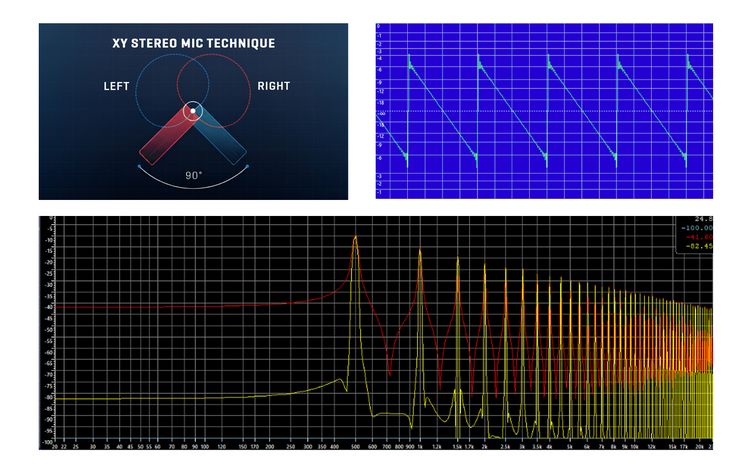
Even with professional microphone setups, phase distortion remains a critical concern in stereo recording.
To illustrate this, consider recordings of sawtooth waves, highly sensitive to phase distortion, captured using the true XY method and the AB method with widely spaced microphones.
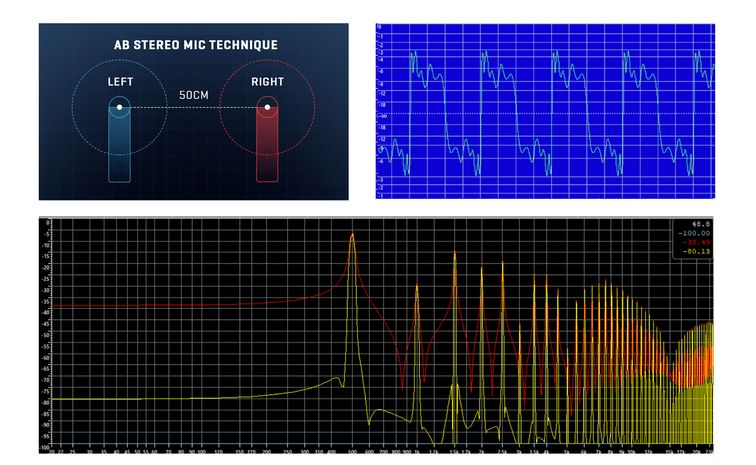
Ideally, when the fundamental frequency at 500 Hz has an amplitude of 1, its harmonics should decrease proportionally: 1/2 for the second harmonic (1 kHz), 1/3 for the third (1.5 kHz), and so forth. The true XY method accurately preserves this harmonic balance, while the AB method introduces phase interference that distorts the composite waveform.
This distortion manifests as a pronounced comb filter effect in the harmonic spectrum, producing a nasal, unnatural tone.

A true XY stereo microphone design eliminates phase differences between left and right channels, ensuring clear, stable recordings without tonal coloration even when sounds merge. This phase coherence delivers natural stereo imaging, accurate localization, and realistic spatial depth.
That’s why the ZOOM H series, with true XY microphones from compact to studio-grade models offers an effortless path to professional sound.

